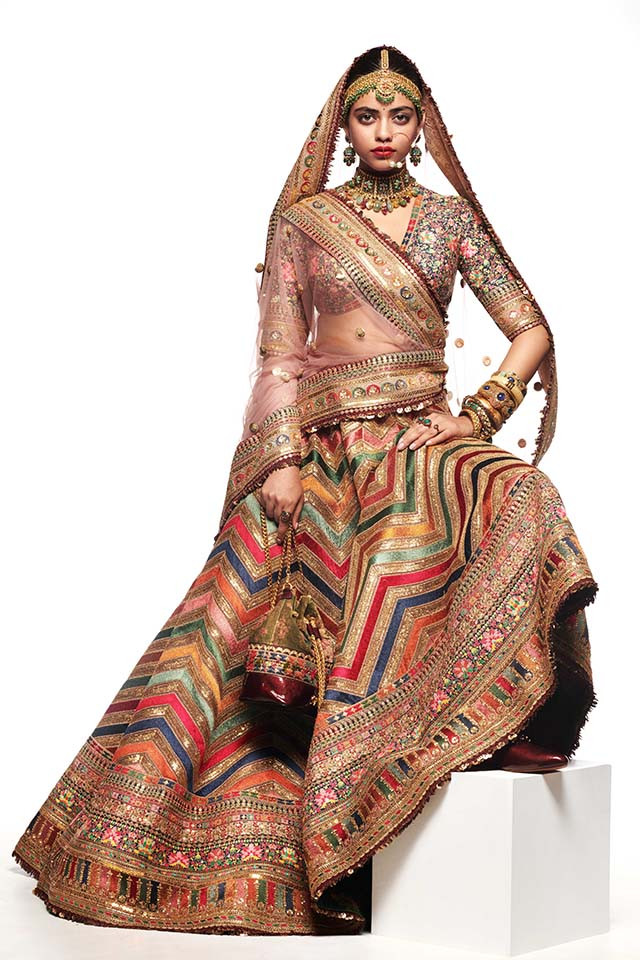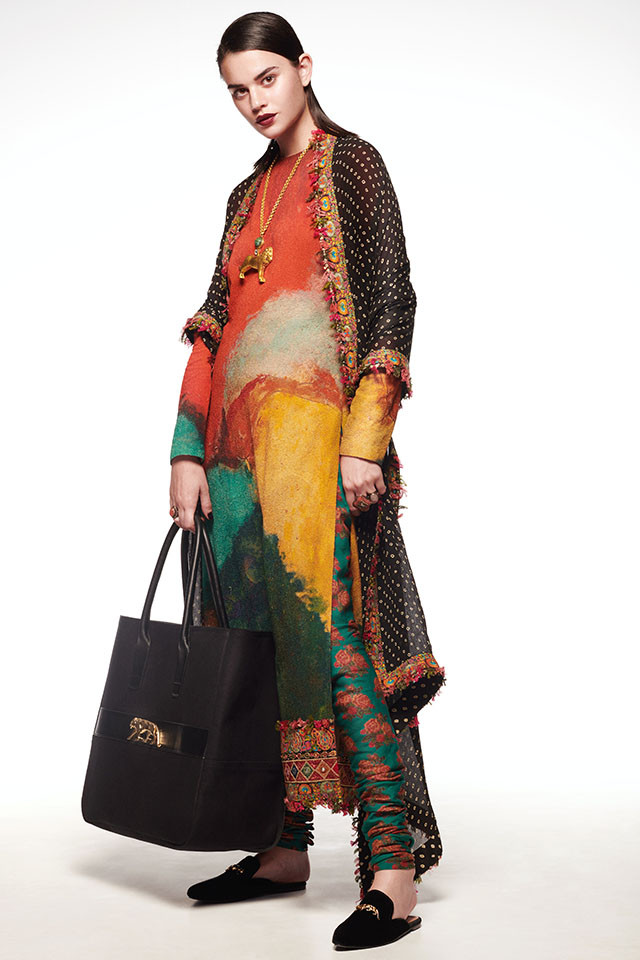
Even in the remotest parts of the country, where fashion is the least of anyone’s priorities, Sabysachi is a name people instantly recognise. Since his debut Lakme Fashion Week collection, Kashgar Bazaar in 2002, Sabyasachi played by his own rules and coined his own trends. Whether it was his choice of unconventional fabrics or his unusual source inspiration, he has always been a non-conformist. Today, he has collaborated with international brands like Christian Louboutin, Pottery Barn, and H&M, but in every partnership his aesthetic remains undiluted. From a billionaire heiress to a Bollywood mega star, every woman wants to be a Sabyasachi bride. Those dreamy lehengas in delectable hues, poetically shot against majestic palaces make a strong case. Amongst his many accolades, revival of heritage handlooms and handicraft, making the six-yard wonder cool again, and serving enough inspiration for the replication industry to make as much revenue as him, tops our list.
You have single-handedly changed the face of Indian fashion. What do you have to say about your influence?
I come from a middle-class background; I've never had an elitist view on fashion. When I started, I realised that Indians were heavily influenced by what the west wore. The lower and middle class wore clothing, it was only the rich who flirted with the idea of fashion. I saw women struggling to be someone else, just to be able to fit into the anarchy of fashion. But our climate, socio-economic situations, our body structure—are all accentuated particularly well by the textiles, clothing, and colours that are made in India. I just made an effort to realign them back to where they belonged. Fashion thrives on making customers insecure, I do the opposite.

Indian handicraft and weaves weren’t getting their due in the bridal market until you popularised them by dressing Anushka Sharma and Deepika Padukone in them. How did you bring about this shift?
No matter where you come from, most girls dream of being a bride, it’s almost a rite of passage, a milestone that is a wish fulfilment. We are a celebrity-obsessed country, when you put them in something people deem culturally familiar, then you’re setting an aspiration that can result in fulfilment. Anushka’s red Benarasi sari and Deepika’s red bridal lehenga are both iconic images of Indian bridal wear. I wanted to create something popular that was a product of our Indian handicraft heritage. I knew these were going to be big weddings and I tried to balance two responsibilities through my work for them, that of being a businessman and being an influencer. In this case, the influencer got the better of the businessman.
Sabyasachi is no longer just a fashion label, it’s a growing conglomerate. Was this always a part of your vision?
I distinctly remember how helpless my father felt when he lost his job. I was 14 then and I’m extremely aware of how an economic crisis can destabilise a family. For me, fashion was one of the many things I could have done. But my idea was always to create a universe that would give jobs and dignity to as many people as possible. A lot of personal agendas are decided and formed by personal experiences. Creativity is great, but not at the cost of scale. For me, that is non-negotiable.”

Nostalgia plays a huge part in the inspiration process of all your collections. How do you manage to extract that?
There is a particular aesthetic that I am drawn to that happens to be a thing of the past. When I was growing up, the world had not opened up as much as it has today. This scenario allowed me to nurture a purist aesthetic. As time went by, we saw open markets, globalisation, and the invasion of the internet. It introduced the concept of ‘fusion’. It’s a school of thought I have never been able to accept. We are a progressive brand, in spite of being in a politically charged environment. Inclusivity, body positivity, and gender fluidity are seamlessly woven into our storytelling.
Your brand has promoted slow and ethical fashion. With your recent collaboration with H&M, a fast fashion brand, how are you planning to remain sustainable?
The H&M collaboration is a one-time thing. We are not a fast fashion brand, we haven’t been for 20 years, and most likely will not go down that route in the future. It used to pain me when I read online how the middle class in this country finds my brand inaccessible. It made me feel embarrassed and guilty, because I came from there. I have always wanted to do a giant collaboration to give the middle class access to the brand.

How do you manage to keep innovating while retaining the brand’s iconic stature?
We believe in making classics. It’s the first hallmark of building a sustainable brand—make products that never get dated and never find themselves in a landfill. Indians buy luxury as a point of investment and not merely for consumption. It’s why classic clothing has become our biggest recipe for success. While we keep our clothing repetitive, which also makes the brand iconic, we keep our marketing relevant and current.
Next Story